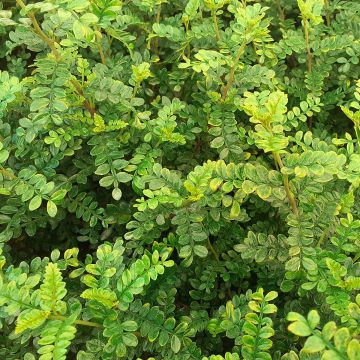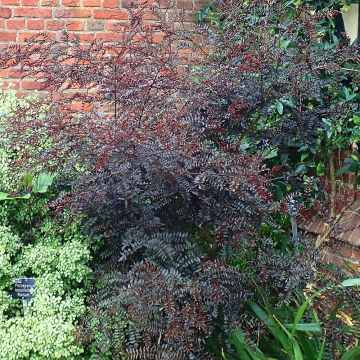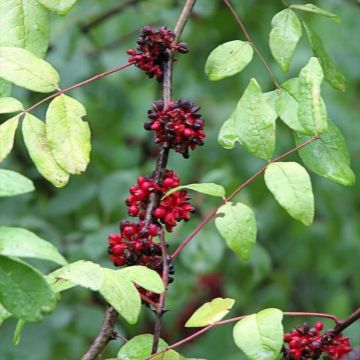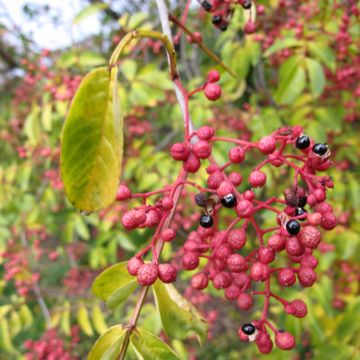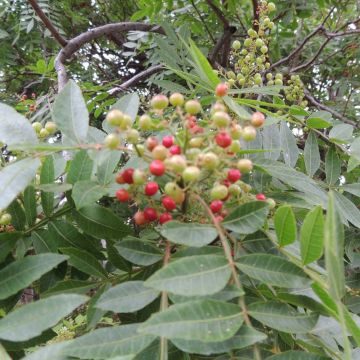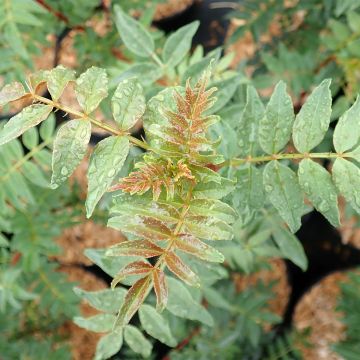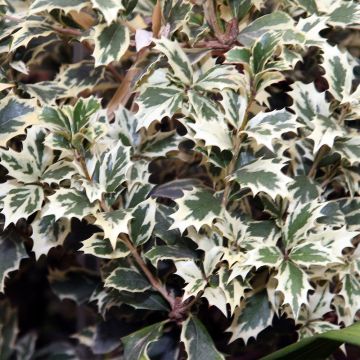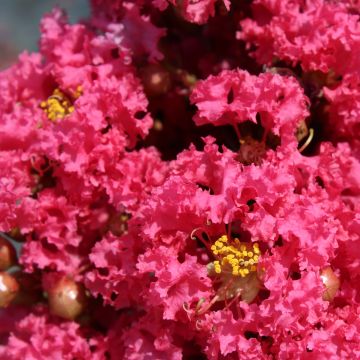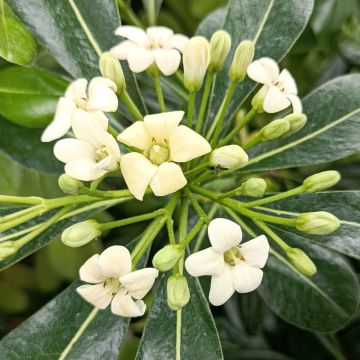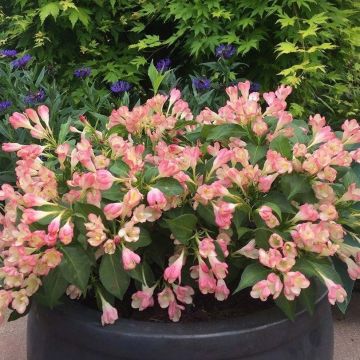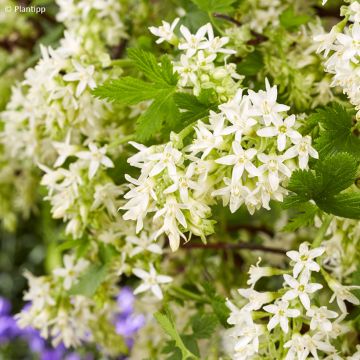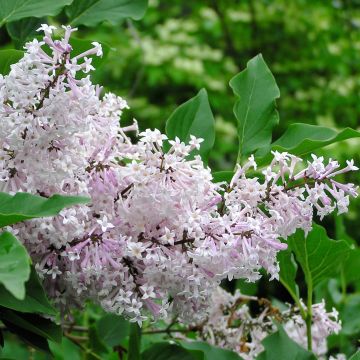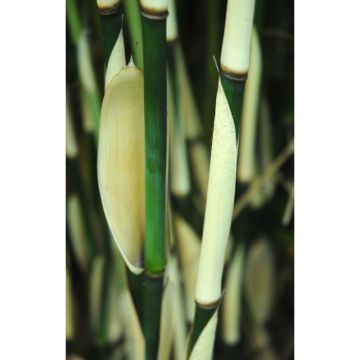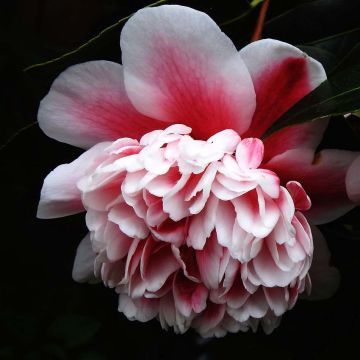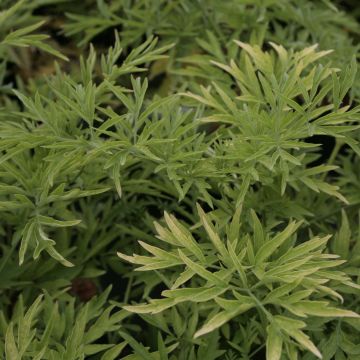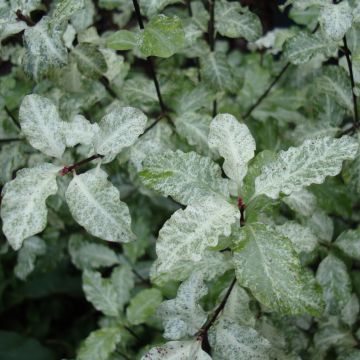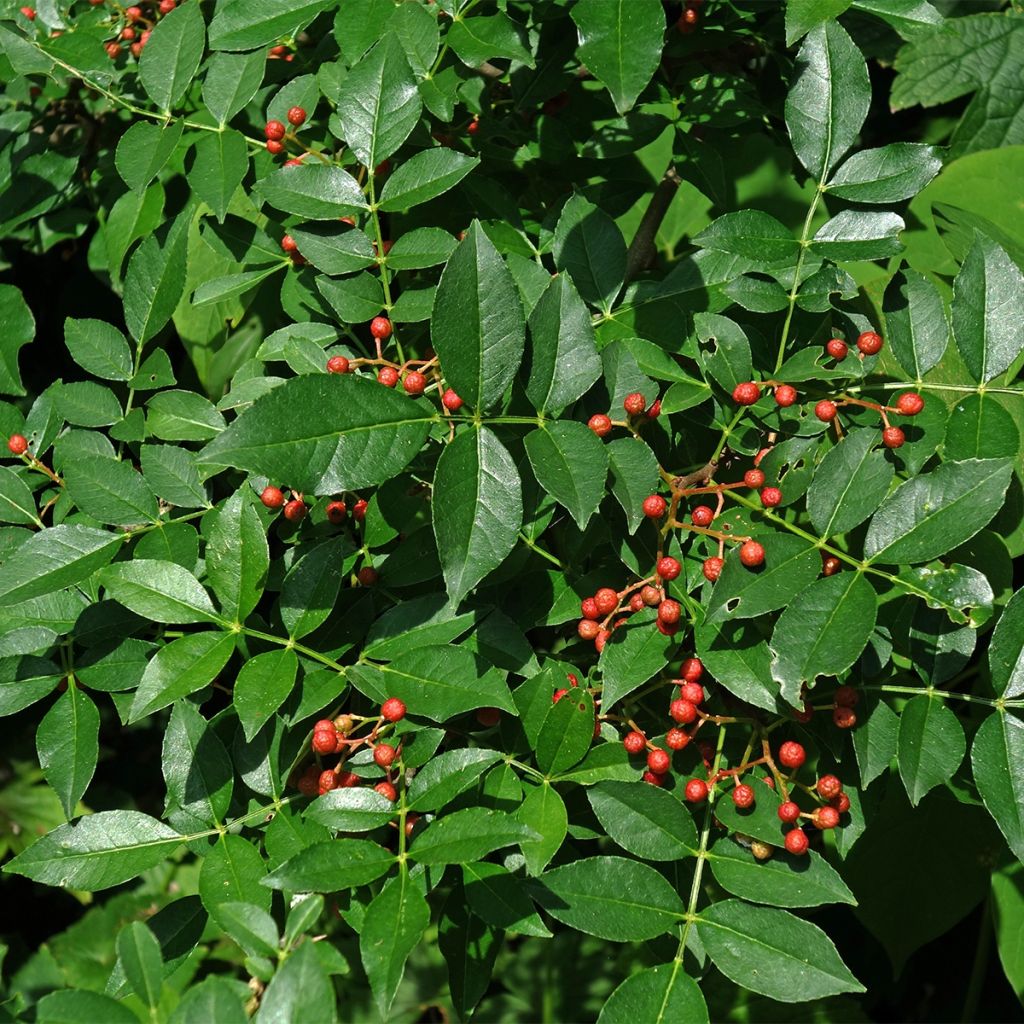

Zanthoxylum coreanum - Poivrier coréen
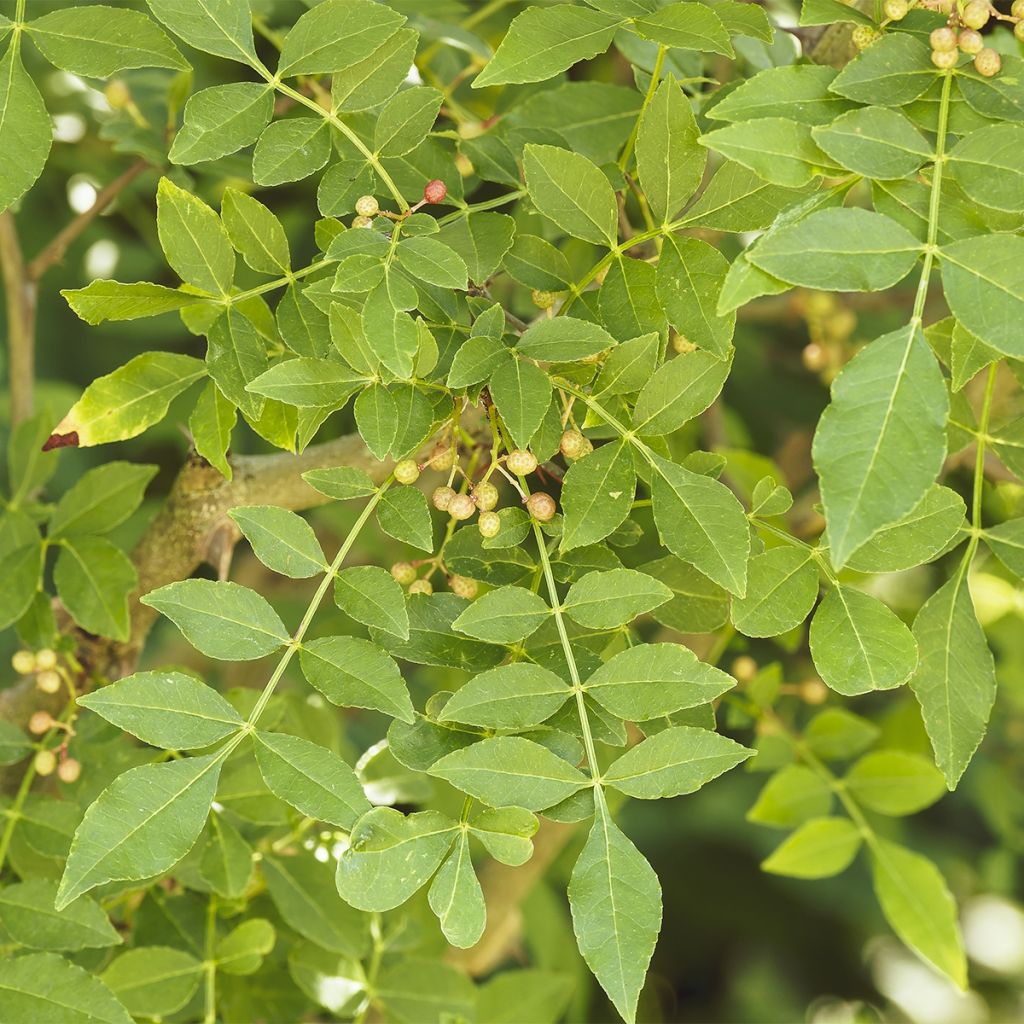

Zanthoxylum coreanum - Poivrier coréen
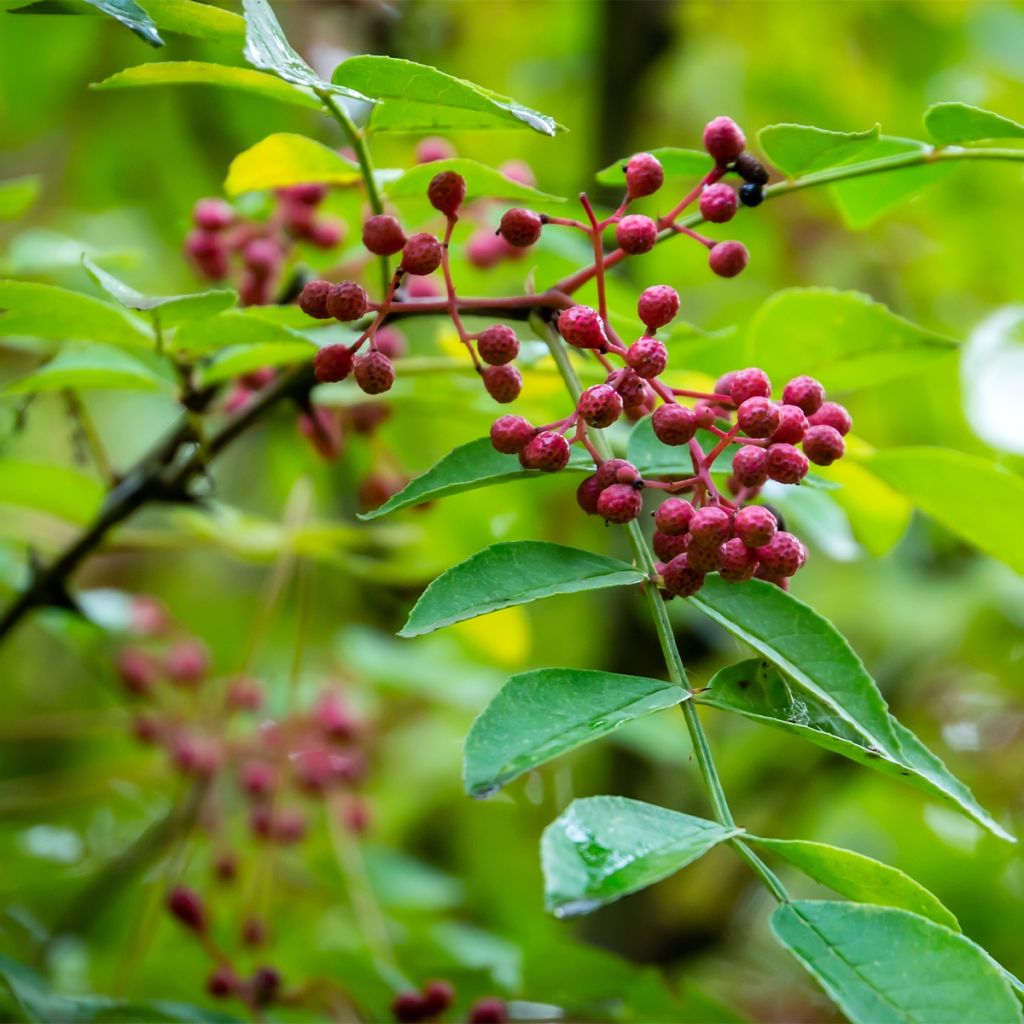

Zanthoxylum coreanum - Poivrier coréen
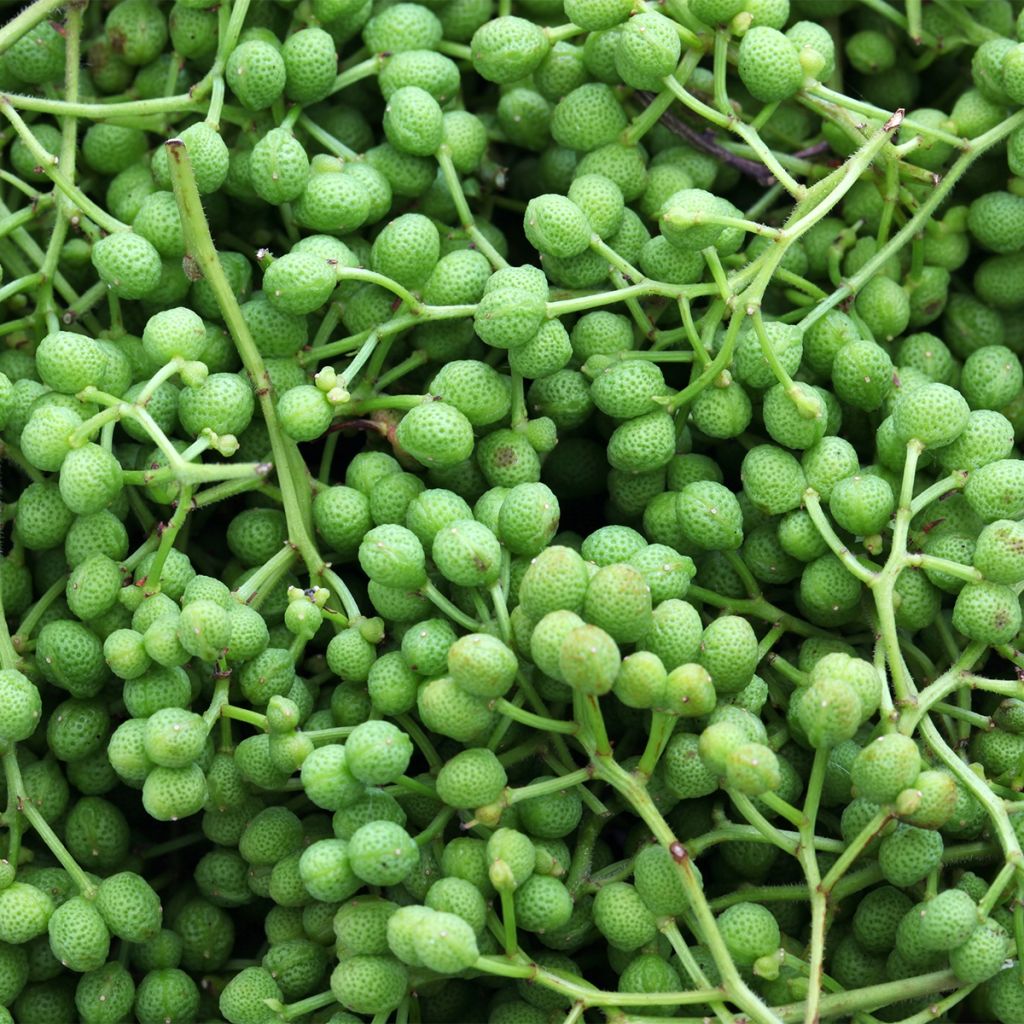

Zanthoxylum coreanum - Poivrier coréen
Zanthoxylum coreanum
Zanthoxylum coreanum
Korean Prickly Ash, Korean Pepper Tree
This item cannot be shipped to the selected country
Delivery charge from €5.90
More information
Schedule delivery date,
and select date in basket
This plant carries a 24 months recovery warranty
More information
We guarantee the quality of our plants for a full growing cycle, and will replace at our expense any plant that fails to recover under normal climatic and planting conditions.
From €5.90 for pickup delivery and €6.90 for home delivery
Express home delivery from €8.90.
Does this plant fit my garden?
Set up your Plantfit profile →
Description
The Zanthoxylum coreanum, sometimes called Pepper tree or Korean Clavalier, is part of a group of small Asian trees known for their aromatic fruits used in cooking. This species, coreanum, less thorny than its cousin simulans, deserves attention for its vigour, hardiness, and large red-orange thorns. Small berries follow discreet spring flowering, and the dried and ground peel is used as a spice. The combination of red fruit and cut foliage turning yellow in September-October is superb. This large bush is ideal as a hedge, and its thorny branches can be used as a defensive hedge.
Originally from Korea and China, the Zanthoxylum coreanum belongs to the same family as citrus trees, the Rutaceae family, which shares a highly aromatic foliage. In nature, it is often found not far from valleys and coasts, at an altitude between 700 and 1100 m (2297 and 3609ft). This deciduous species loses its foliage in the winter, can withstand temperatures down to -20°C (1°F) and grows in well-drained and sufficiently deep soil. Late frosts can, however, harm its flowering and burn its young shoots. The Korean pepper tree grows well, but it doesn't do well in drought or dense shade.
This small tree, which grows very quickly in cool and fertile soil, measures an average of 4 m (13ft) in height with a similar spread at maturity. Its habit is graceful, naturally spreading, supported by flexible branches. The trunk and branches are adorned with large thorns that widen over the years while their tips become blunt. The branches bear spiny leaves arranged alternately, with a central vein that is not winged, distinguishing it from Z. simulans. Each leaf that produces essential oil comprises 4 to 7 shiny, oblong, elliptical-shaped leaflets with toothed edges. The upper side of the leaflets is deep green, while the underneath is lighter and duller. In autumn, before falling off, the leaflets turn yellow. When crushed, the leaves release a mildly spicy, woody, lemony, and slightly peppery scent. Flowering occurs on plants that are already 3 or 4 years old. It takes place in May-June, depending on the climate, on one-year-old branches. The shrub consists of small clusters or cymes which measure 3 to 5 cm (1 to 2in) in diameter. It is composed of small yellow-green flowers that do not have petals. Both male and female flowers can be found on this shrub. Once pollinated, the female flowers produce round fruits that are spherical and warty, measuring 3 to 5 mm (1in) in diameter. As they ripen, their fleshy peel changes from red to brown, and they open to reveal black and shiny seeds that are highly sought-after by birds. Only the peel is consumed once dried and ground.
In the kitchen:
The berries of the Korean pepper tree are not the same as the "pink berries" or "pink pepper" sold in the spice aisle. The Brazilian pepper tree, native to South America, produces the latter. The Zanthoxylum's fruit's brown "skin" is used in cooking to enhance preserves, rice, salads, and cooked dishes, particularly in traditional Asian cuisine. Dried and powdered leaves are also used, especially in Japan, as they have a similar aroma to the berries.
In the garden:
This small tree has a charming quality, making it ideal for an English-style or naturalistic garden. It can be a stunning specimen if grown alone and will impress your visitors. You can prune the lower branches to expose the trunk up to 1 metre (3 feet) from the ground. If left to grow freely, it fits naturally into an untamed hedge alongside dogwoods, rowans, viburnums, osage oranges, ornamental apples and cherry trees, and honey locusts. The spiny nature of its young branches makes it a good choice for a defensive hedge, though it is less of a deterrent than its cousin, the Zanthoxylum simulans.
Report an error about the product description
Zanthoxylum coreanum in pictures
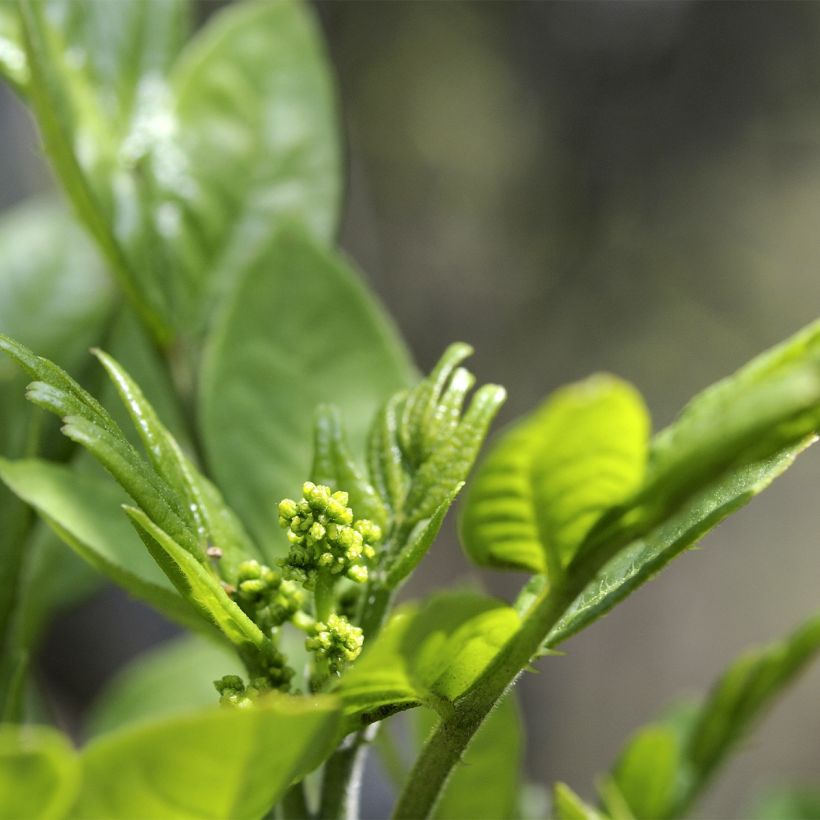

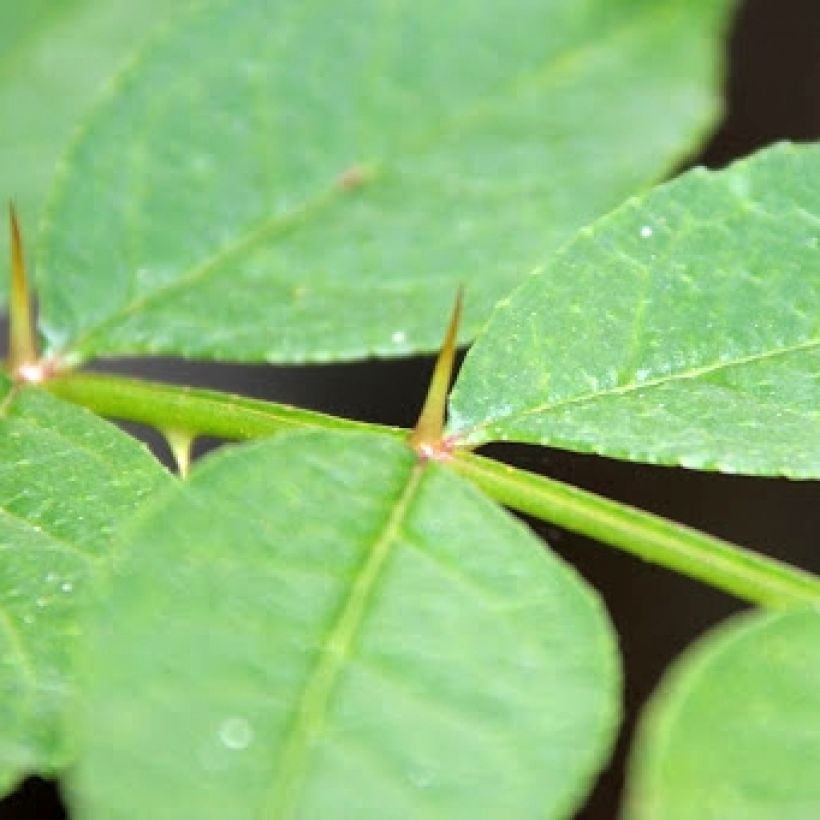

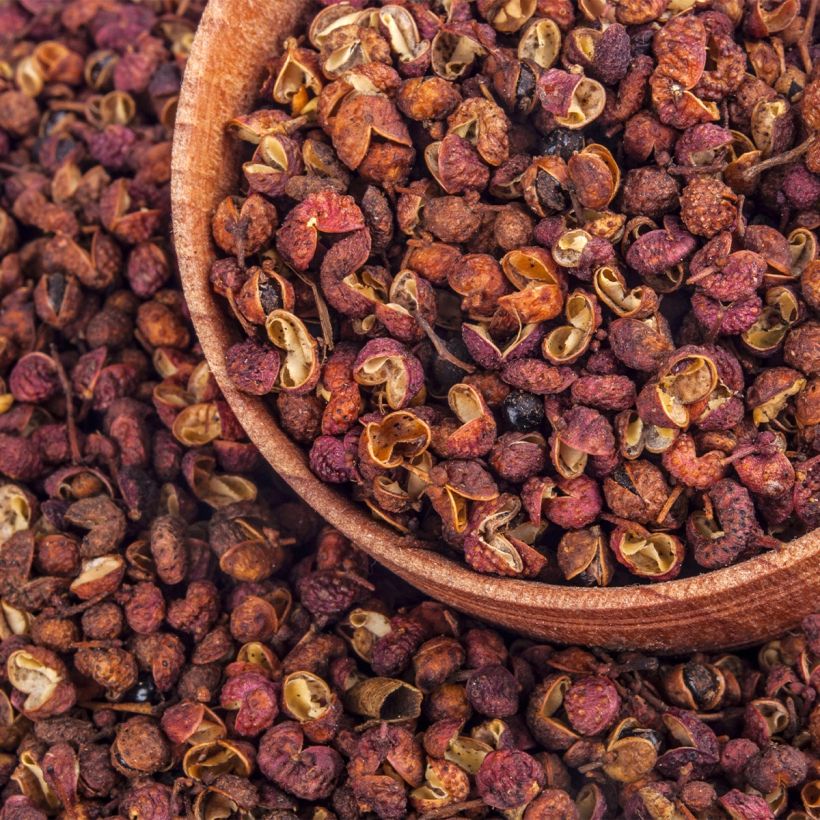

Plant habit
Flowering
Foliage
Botanical data
Zanthoxylum
coreanum
Rutaceae
Korean Prickly Ash, Korean Pepper Tree
China
Other Zanthoxylum - Prickly Ash
Planting and care
The Korean Pepper Bush should be planted in spring if you live in a cooler climate or early autumn in a drier and warmer climate. It is important to choose a location that is sheltered from cold and dry winds, as these can damage the plant's flowers and burn its young shoots. You should also ensure the plant gets enough sun or semi-shade, as it won't flower or fruit well in dense shade. The Korean Pepper Bush grows best in deep, loose, fertile, and well-drained soil that is moist but not waterlogged. It can tolerate some limestone in the soil and acidic soils as long as they are not too poor. If you want your plant to grow quickly, ensure the soil remains moist in summer. It is resistant to temperatures as low as -20°C (1°F), but it is more sensitive during its young years, especially in heavy and wet soil. If you need to lighten your garden soil, use river sand, gravel, or pumice. In very cold regions, you should protect young plants with winter cover and mulch the base.
The Korean Pepper Bush is an easy-to-grow plant that requires little maintenance except for regular watering in dry summers. If you're planting it as a hedge, space the young plants one metre apart. If you need to prune the plant, you should do it in autumn, but remember that this will sacrifice some of the following spring's flowers.
Planting period
Intended location
Care
This item has not been reviewed yet - be the first to leave a review about it.
Hedge shrubs
Haven't found what you were looking for?
Hardiness is the lowest winter temperature a plant can endure without suffering serious damage or even dying. However, hardiness is affected by location (a sheltered area, such as a patio), protection (winter cover) and soil type (hardiness is improved by well-drained soil).

Photo Sharing Terms & Conditions
In order to encourage gardeners to interact and share their experiences, Promesse de fleurs offers various media enabling content to be uploaded onto its Site - in particular via the ‘Photo sharing’ module.
The User agrees to refrain from:
- Posting any content that is illegal, prejudicial, insulting, racist, inciteful to hatred, revisionist, contrary to public decency, that infringes on privacy or on the privacy rights of third parties, in particular the publicity rights of persons and goods, intellectual property rights, or the right to privacy.
- Submitting content on behalf of a third party;
- Impersonate the identity of a third party and/or publish any personal information about a third party;
In general, the User undertakes to refrain from any unethical behaviour.
All Content (in particular text, comments, files, images, photos, videos, creative works, etc.), which may be subject to property or intellectual property rights, image or other private rights, shall remain the property of the User, subject to the limited rights granted by the terms of the licence granted by Promesse de fleurs as stated below. Users are at liberty to publish or not to publish such Content on the Site, notably via the ‘Photo Sharing’ facility, and accept that this Content shall be made public and freely accessible, notably on the Internet.
Users further acknowledge, undertake to have ,and guarantee that they hold all necessary rights and permissions to publish such material on the Site, in particular with regard to the legislation in force pertaining to any privacy, property, intellectual property, image, or contractual rights, or rights of any other nature. By publishing such Content on the Site, Users acknowledge accepting full liability as publishers of the Content within the meaning of the law, and grant Promesse de fleurs, free of charge, an inclusive, worldwide licence for the said Content for the entire duration of its publication, including all reproduction, representation, up/downloading, displaying, performing, transmission, and storage rights.
Users also grant permission for their name to be linked to the Content and accept that this link may not always be made available.
By engaging in posting material, Users consent to their Content becoming automatically accessible on the Internet, in particular on other sites and/or blogs and/or web pages of the Promesse de fleurs site, including in particular social pages and the Promesse de fleurs catalogue.
Users may secure the removal of entrusted content free of charge by issuing a simple request via our contact form.
The flowering period indicated on our website applies to countries and regions located in USDA zone 8 (France, the United Kingdom, Ireland, the Netherlands, etc.)
It will vary according to where you live:
- In zones 9 to 10 (Italy, Spain, Greece, etc.), flowering will occur about 2 to 4 weeks earlier.
- In zones 6 to 7 (Germany, Poland, Slovenia, and lower mountainous regions), flowering will be delayed by 2 to 3 weeks.
- In zone 5 (Central Europe, Scandinavia), blooming will be delayed by 3 to 5 weeks.
In temperate climates, pruning of spring-flowering shrubs (forsythia, spireas, etc.) should be done just after flowering.
Pruning of summer-flowering shrubs (Indian Lilac, Perovskia, etc.) can be done in winter or spring.
In cold regions as well as with frost-sensitive plants, avoid pruning too early when severe frosts may still occur.
The planting period indicated on our website applies to countries and regions located in USDA zone 8 (France, United Kingdom, Ireland, Netherlands).
It will vary according to where you live:
- In Mediterranean zones (Marseille, Madrid, Milan, etc.), autumn and winter are the best planting periods.
- In continental zones (Strasbourg, Munich, Vienna, etc.), delay planting by 2 to 3 weeks in spring and bring it forward by 2 to 4 weeks in autumn.
- In mountainous regions (the Alps, Pyrenees, Carpathians, etc.), it is best to plant in late spring (May-June) or late summer (August-September).
The harvesting period indicated on our website applies to countries and regions in USDA zone 8 (France, England, Ireland, the Netherlands).
In colder areas (Scandinavia, Poland, Austria...) fruit and vegetable harvests are likely to be delayed by 3-4 weeks.
In warmer areas (Italy, Spain, Greece, etc.), harvesting will probably take place earlier, depending on weather conditions.
The sowing periods indicated on our website apply to countries and regions within USDA Zone 8 (France, UK, Ireland, Netherlands).
In colder areas (Scandinavia, Poland, Austria...), delay any outdoor sowing by 3-4 weeks, or sow under glass.
In warmer climes (Italy, Spain, Greece, etc.), bring outdoor sowing forward by a few weeks.

































